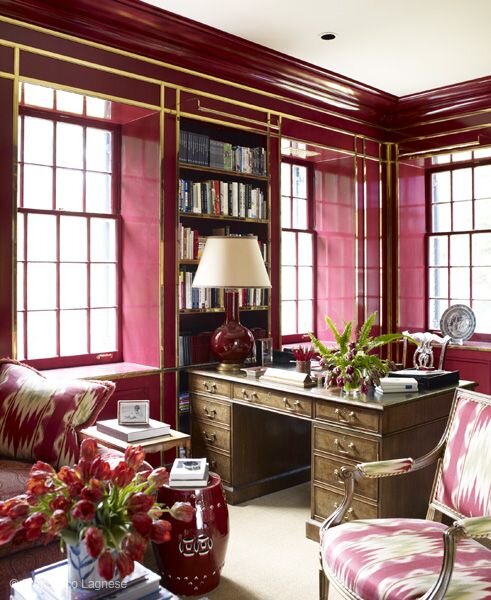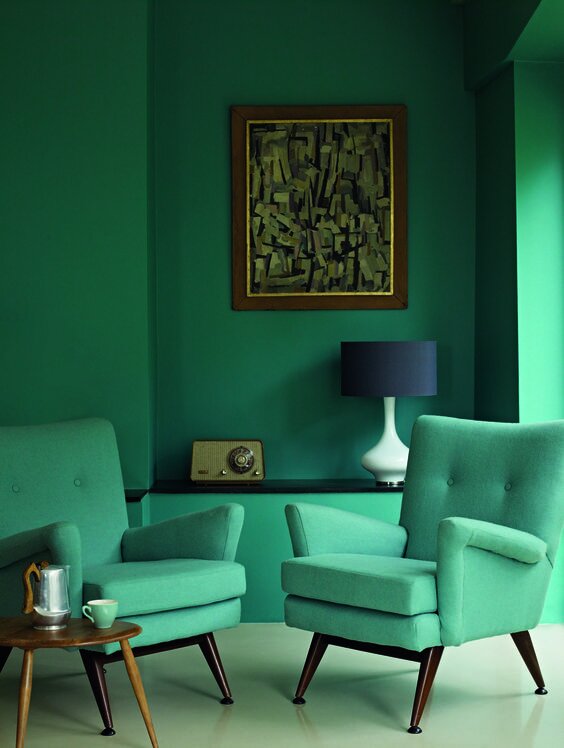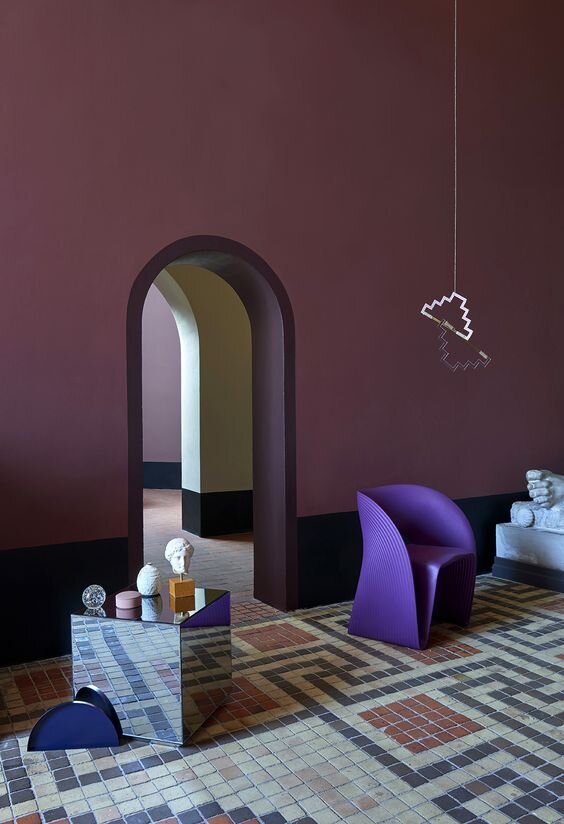Design 101: Psychological Effects of Color in Interior Design
via pixel
Content contribution by: James Bigham of Bigham Associates
Sound and light can alter people's moods. Dim lights and soft music put us in a relaxed state. Loud unpleasant noise makes us agitated. Almost everyone understands these effects of light and sound on our moods.
What most people are less aware of is the effect colors have on us. Colors can make us aggressive, optimistic, sad, or happy. And just like light and sound, colors are busy affecting our minds, even when we are unaware of their influence.
This is why careful thought should be given to the choice of colors one uses in a room, Bigham & Associates LLC advises. A room's colors can boost or impede the activities that go on in it. If there is a mismatch between the colors of a room and the way we want people in that room to feel, the colors become a problem.
Room color can enhance relaxation, creativity, or whatever state of mind is desired in a room.
via rawpixel.com
Colors
They come from the different wavelengths of light that make up the rainbow; the color spectrum. What we see when we look at the sun's rays, white light, is a perfect combination of all the colors of the rainbow.
When white light falls on an object, the object absorbs most of it and reflects the rest away. Different objects absorb different parts of the color spectrum. Red objects absorb all but the red part of the color spectrum. Black objects absorb all the colors in the spectrum.
Even if we like to deny it, humans are still subject to the rising and setting of the sun. This is why we need artificial lights at night; without them, we would automatically drift into sleep.
Despite of technology, we are not immune to the influence of the sun's rays. And since this light is made up of different kinds of lights or colors, those colors also affect us.
How to make color work for you
You may consider matching a room's color or colors to the space’s primary purpose. It may make it easy for people who use the room to readily enter into an optimal state of mind. Colors create a subtle hypnotic effect that is inescapable since we are constantly immersed in colors. But when we understand this we can intentionally choose colors to benefit from their natural effects on us.
How do different colors affect people's moods?
via rawpixel.com
RED
is the color of passion; it induces feelings of energy. It is traditionally associated with war, power, danger, love, desire, and determination. Because red is never boring, it is good for creative spaces, where excitement is a key factor. Red in the kitchen helps to stir appetite. It is excellent when used as an accent color to add warmth to a room.
“Miles Redd is one of my favorite designers and his name is so very fitting too. Here are some of his creations that feature this fabulous color.”
via Chairish
via House Beautiful
via Katie Considers
digital collage by KND | images via our Pinterest board color inspirations
GREEN
is the color of life due to its ubiquity in natural environments. It is associated with harmony, freshness, growth, fertility, and safety. When used as the main colors in a room, green has a calming effect. This quality makes it suitable for most rooms in a home. Different shades of green vary in their effect; deep green is linked to jealousy, aqua to healing, and yellow-green to cowardice.
“Nature always wears the colors of spirit.”
via Arch Daily
via airspaces.co.uk
digital collage by KND | images via our Pinterest board color inspirations
Yellow
is called the "color of sunshine' and evokes feelings of exuberance, happiness, intellect, and energy. Painting spaces in yellow make them more welcoming. But at the same time, the exuberance that yellow inspires can make people more likely to lose their temper. However, this depends on the shade of yellow; the brighter the shades, the more uplifting the color is.
via my vibe my life
“Yellow is a timeless happy color. Our front room we call our Salon is painted in Sherwin William’s ‘Friendly Yellow’ SW 6680. While in quarantine, I’ve been using this space as my private yoga studio because it is so calming and meditative...we also have lots of houseplants in here, which helps.”
designer: Mario Buatta via House and Garden's Best in Decoration, by The Editors of House and Garden, Conde Nast, 1987
digital collage by KND | images via our Pinterest board color inspirations
BLUE
The color blue is credited with being able to slow the body's metabolism, reduce blood pressure, and calm the mind. It is one of the most popular colors and is associated with confidence, trust, faith, loyalty, wisdom, and intelligence. Blue facilitates hard words and deep thinking since it enhances clarity, order, and focus. It is a good choice for offices and bedrooms.
via Elle.se
via Pinterest D2 Townhouse by Jake Moulson Architects, Dublin
“Blue has been found to be the only appetite suppressant in the color spectrum. Many weight loss plans suggest the use of blue plates to eat food out of because less food is eaten due to the nature of the color. Studies have also shown that people tend to eat less junk food out of the refrigerator if a blue light is placed inside. The use of blue lights in dining areas has also led to less consumption of food. The reason for the suppressant nature of the color blue is its relative absence in nature. Most of the vegetables we eat are green or red and most meat is red. Other than blueberries, it is not easy to find blue as a natural color. As a result, the color blue does not have an automatic response towards our appetite. Another reason why blue is an appetite suppressant is because of the primal nature of humans. When searching for food, people before us used to avoid eating objects colored black, purple, or blue because these colors were a sign for potentially poisonous food.”
- from The Relationship Between Food and Color by Kalim Hussaini
via Casa de Perrin
digital collage by KND | images via our Pinterest board color inspirations..
PURPLE
Purple denotes rich sophistication, luxury, and creativity. It is often viewed as the color of royalty. Purple is one of the most loved colors by children; partly because of its ability to evoke drama. Using purple in a room conveys a sense of boldness, innovativeness, mystery, and class.
via mydomaine.com
via husk design blog
GReY
is versatile and can be adapted to a range of uses. Grey is calm and composed; it inspires a sense of security and stability, and stimulates intelligence. It has a calming effect on small children, which is why it is frequently used in family homes.
via Jenna Kate At Home
“Grey and gray are two different spellings of the same word. Gray is more common in the U.S., while grey is more common in other English-speaking countries. In proper names—like Earl Grey tea and the unit Gray, among others—the spelling stays the same, and they need to be memorized.”
BLACK
indicates drama, mystery, and power. At the same time, it incorporates an element of neutrality which allows it to fit seamlessly into any setting. Black is a great choice as an accent color. One of the best things about black is that it is never outdated.
via estliving.com
via kresswellinteriors.com
via we-are-scout.com
Thank you for the read and hope you are inspired to be a little more daring with your interior color choices. Want to know more, need some designer help, or just have ideas for our next blog post? Reach out to us.
We’re here to help you.
Cheers,
K
*** BONUS LINKS***
Love a little more info? Check out these links below for further reading and colorful books
ONLINE READS
Color Psychology: Does It Affect How You Feel?
The Psychology and Meaning of Colors
ColorSnap Visualizer from Sherwin Williams
10 Shades & The Personality Behind Them
Whatever Happened to Roy G Biv?
BOOKS WE LOVE
*We are a participant in ShopStyle & Amazon affiliate advertising programs designed to provide a means for us to earn fees by linking to Amazon.com and other affiliated sites.



























